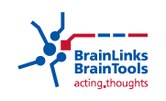Eilon Vaadia, Director of the Edmond and Lily Safra Center for Brain Sciences, The Hebrew University of Jerusalem | The Creative Brain and Brain Machine Interfaces
| When |
Apr 25, 2017
from 06:15 PM to 08:15 PM |
|---|---|
| Contact Name | Stefan Rotter |
| Contact Phone | +49 761 203 9556 |
| Add event to calendar |
|
Abstract
The Brain’s enigma has always been a most challenging intellectual endeavor. Experimental, theoretical, and computational advancement have made it possible to begin addressing the principal questions regarding brain’s functions like sensorimotor learning and perception, and as well as higher cognitive functions.
I will present an intuitive theory suggesting that adaptive control-loops constitute internal models (I.M.) in our brain, predicts the sensory consequences of our decisions and actions and create our perception, imagination and creativity. The advanced features of these I.M.s emerged only 50,000 years ago, and lead humans to acquire new skills; to predict the future, to develop imagination and foster communication between individual and societies. The human brain is highly skillful in creating “imaginary realities” (internal models) that are not always representing the external reality. Thus, the ability to generate complex internal models, led to development of science arts and technology.
In the second part of the talk I describe two types Brain Machine interfaces (BMIs), inspired by the brain’s I.M. One type deciphers the brain’s activity and predicts the desired actions, as do the I.M.s of our brain. Another type of BMI is used as a conditioning device. The idea here is to teach the brain how to generate new patterns of neuronal activity in order to achieve rewards, thus, creating a new IM in a local circuit of the brain.
These BMI studies serve to study the nature of the brain internal models, mechanisms of prediction and adaptivity of the brain and demonstrate new exciting ideas for future clinical applications that may be useful for neurological and psychiatric diseases.











